COVID-19 y lactancia materna
COVID-19 and breastfeeding
Resumen
El trabajo tuvo como objetivo el estudio de publicaciones referentes al COVID-19 y lactancia materna basados en la evidencia disponible, así como conocer las recomendaciones establecidas en cada circunstancia con la finalidad de optimizar la atención de la madre y el niño. La revisión se realizó en bases de datos PubMed, Sociedad Española de Neonatología (SENEO), Sociedad Venezolana de Puericultura y Pediatría (SVPP), UNICEF, Organización Panamericana de la Salud (OPS) y Organización Mundial de la Salud (OMS), entre otros. Las investigaciones realizadas son muy escasas y están enmarcadas en la protección y apoyo de la lactancia materna, que son considerados por las organizaciones y autoridades sanitarias de todo el mundo como un área de acción y atención prioritaria. Hasta ahora no se ha identificado el virus en leche humana, aunque los estudios son muy limitados y debido a sus propiedades inmunológicas tiene más probablemente un papel protector contra la infección que como vehículo de transmisión. Se concluyó que los resultados confirman la actualidad y pertinencia del tema para la protección de la salud de la madre y el niño lactante y la necesidad de realizar nuevas investigaciones relacionadas con la temática de estudio.
The objective of this work was to study publications related to COVID-19 and breastfeeding based on the available evidence, as well as to know the recommendations established in each circumstance in order to optimize the care of the mother and the child. The review was performed in PubMed databases, the Spanish Neonatal Society (SENEO), the Venezuelan Society for Childcare and Pediatrics (SVPP), UNICEF, the Pan American Health Organization (PAHO) and the World Health Organization (WHO), among others. The investigations carried out are very scarce and are framed in the protection and support of breastfeeding, which are considered by health organizations and authorities around the world as a priority area of action and attention. Until now, the virus has not been identified in human milk, although studies are very limited and due to its immunological properties, it has a more likely protective role against infection than as a vehicle of transmission. It was concluded that the results confirm the topicality of the theme for the protection of the health of the mother and the nursing child in and the need to carry out new research related to the subject of study.
Palabras clave
Texto completo:
PDFReferencias
ABM. Academy of Breastfeeding Medicine. (2020). ABM Statement On Coronavirus 2019 (COVID-19). Disponible en: https://www.bfmed.org/abm-statement-coronavirus
AELAMA. Asociación Española de Lactancia Materna. (2020). Manejo del riesgo de contagio por coronavirus en madres y recién nacidos. Accesible en www.AELAMA.org
Aguilar, M., García, L., Sánchez, A., Guisado, R., Hermoso, E., y Mur. N. (2016). Beneficios inmunológicos de la leche humana para la madre y el niño. Revisión sistemática. Nutr Hosp, 33 (2)
APILAM. Asociación para la Promoción Científica y Cultural de Lactancia Materna (2020). Infección Materna por Coronavirus 2019-nCoV. (Acceso 08/03/2020)
Brahm, P. y Valdés, V. (2017). Beneficios de la lactancia materna y riesgos de no amamantar. Rev Chil Pediatr, 88(1), 7-14
Brunser, O. (2019). Leche Materna: Características funcionales de los oligosacáridos de la leche materna (Parte 2) Rev Chil Nutr, 46(5), 633-643
CDC. Centers for Disease Control and Prevention. (2020). Guidance on Breastfeeding for a Mother Confirmed or Under Investigation for COVID-19.
CDC. Centro para el Control y la Prevención de Enfermedades. (2020). Guidance on Coronavirus in Pregnant and Breastfeeding women https://www.contemporaryobgyn.net/article/cdc-guidance-coronavirus-pregnant-breastfeeding-women
Chen et al. (2020). Clinical characteristics and intrauterine vertical transmission potential of COVID-19 infection in nine pregnant women: a retrospective review of medical records. Lancet, 395, 809-15.
Császár, N. y Bókkon, I. (2018) Mother-newborn separation at birth in hospitals: A possible risk for neurodevelopmental disorders. Neurosci Biobehav Rev, 84, 337-351
Dominguez-Bello, M., Godoy- Vitorino, F., Knight, R y Blaser, M. (2019). Role of the microbiome in human development. Gut, 68,1108–1114
Dong et al. (2020). Epidemiological characteristics of 2143 pediatric patients with 2019 coronavirus disease in China. Pediatrics. DOI: 10.1542/peds.2020-0702
Duijts et al. (2010). Prolonged and Exclusive Breastfeeding Reduces the Risk of Infectious Diseases in Infancy. Pediatrics, 126, e18-e25
E-lactancia. (2020). COVID-19 Materna. Enfermedad materna por Coronavirus 19 y Lactancia Materna ¿Son compatibles?. Disponible: http://www.e-lactancia.org/breastfeeding/maternal-coronavirus-2019-ncov-infection/product/.
Ena, J. y Wenzel, P. (2020) Un nuevo coronavirus emerge. Rev Clin Esp, 220(2), 115-16
Grupo de Trabajo Internacional Voluntario de Expertos en Lactancia Materna. Emergencia COVID-19-TASK FORCE: PASO 10. Guía operativa. América Latina. 1 era Edición. Marzo 2010. www.paso 10.org
Horta, B. (2019). Breastfeeding: Investing in the Future. Breastfeed Med, 1, 14 (Suppl 1), S-11–S-12.
IHAN. Iniciativa para la humanización de la asistencia al nacimiento y la lactancia. (2020): Lactancia materna ante la pandemia de Coronavirus COVID-19. Información para los profesionales que atienden familias con niños y niñas pequeños.
Liu S. y Saif L. (2020). Emerging Viruses without Borders: The Wuhan Coronavirus Viruses, 12(2): 130
LLLI. Liga de La Leche Internacional. (2020). Seguir Amamantando a tu Bebé Durante Una Infección con Coronavirus (2019-nCoV; COVID-19) y Otras Infecciones Respiratorias. Noticias de LLLI. Acceso 13 /2/2020 en www.llli.org/coronavirus
Madero, M., Castro, A., y Rodríguez F. (2016). Piel con Piel en la primera hora de vida: reflejo de las nuevas etapas instintivas. ENE, 10(2)
Mahase, E. (2020). China coronavirus: what do we know so far? BMJ, 368:m368
MPPS/OPS/UNFPA. Ministerio del Poder Popular para la Salud / Organización Panamericana para la Salud/ Fondo de Población de las Naciones Unidas. (2020). COVID-19, embarazo y lactancia: Dirigido a proveedores de salud. Venezuela
OMS. World Health Organization. (2020). Infection Prevention and control during health care when novel coronavirus (nCoV) infection is suspected Interim guidance.
OMS. World Health Organization (2020). Modes of transmission of virus causing
COVID-19: implications for IPC precaution recommendations: scientific brief, 29 March 2020. World Health Organization. https://apps.who.int/iris/handle/10665/331616
Organización Panamericana de la Salud / Organización Mundial de la Salud. (2020). Actualización Epidemiológica: Nuevo coronavirus (COVID-19). Washington, D.C.: OPS/OMS; 2020. • www.paho.org • © OPS/OMS,
Pannaraj et al. (2017) Association Between Breast Milk Bacterial Communities and Establishment and Development of the Infant Gut Microbiome. JAMA Pediatr, 171(7), 647-654.
Qi, Lu. y Yua, Shi (2020) Coronavirus disease (COVID-19) and neonate: What neonatologist need to know. J Med Virol, 1-4
Qun Li et al. (2020) Early Transmission Dynamics in Wuhan, China, of Novel Coronavirus–Infected Pneumonia. N Engl J Med, 382 (13), 1199-1207
Red Book Online. (2020) Coronaviruses, including SARS and Mers. Acceso 13/3/2020 en: https://redbook.solutions.aap.org/chapter.aspx?sectionid=189640073&bookid=2205
SEGO. Sociedad Española de Ginecología y Obstetricia. (2020). Documento técnico Manejo de la mujer embarazada y el recién nacido con COVID-19 Madrid, España
SENEO. Sociedad Española de Neonatología. (2020). Recomendaciones para el manejo del recién nacido en relación con la infección por SARS-CoV-2. Disponible en: https://www.seneo.es/images/site/Recomendaciones_SENeo_SARS-CoV-Version_1.pdf
SVPP. Sociedad Venezolana de Puericultura y Pediatría (2020). Guía de Atención del Paciente Pediátrico con Infección por SARS-CoV-2 (COVID-19)
Trilla, A. (2020). Un mundo, una salud: la epidemia por el nuevo coronavirus COVID-19. ISISGlobal, 154 (5): 175-177
Turfkruyer, M. y Verhasselt, V. (2015). Breast milk and its impact on maturation of the neonatal immune system. Current Opinion in Infectious Diseases, 28(3), 199–206
UNICEF. United Nations Children’s Fund. (2020). Coronavirus disease (COVID-19): What parents should know. Disponible en: https://www.unicef.org/stories/novel-coronavirus-outbreak-what-parents-should-know.
Wang, C., Horby, PW., Hayden, FG y Gao, GF. (2020). A novel coronavirus outbreak of global health concern. Lancet, 395 (10223), 470-473
Wu F et al. (2020) .A new coronavirus associated with human respiratory disease in China. Nature, 579 (7798), 265-269.
Xiaoxia Lu., Liqiong Zhang., y Hui Du. (2020). Wuhan Children’s Hospital Wuhan, China. N Engl J Med : DOI: 10.1056 / NEJMc2005073
Zhao S et al. (2020). Preliminary estimation of the basic reproduction number of novel coronavirus (2019-nCoV) in China, from 2019 to 2020: A data-driven analysis in the early phase of the outbreak. International Journal of Infectious Diseases, 92, 214
Zhu et al. (2020). Clinical an analysis of 10 neonates born to mothers with 2019- nCoV pneumonia. Transl Pediatr, 9(1), 51-60.
Enlaces refback
- No hay ningún enlace refback.
Depósito Legal Electrónico: ME2016000090
ISSN Electrónico: 2610-797X
DOI: https://doi.org/10.53766/GICOS
| Se encuentra actualmente registrada y aceptada en las siguientes base de datos, directorios e índices: | |||
 | |||
 |  |  |  |
 | 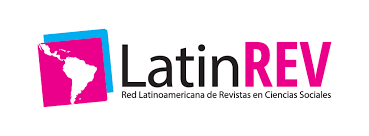 | ||
 | 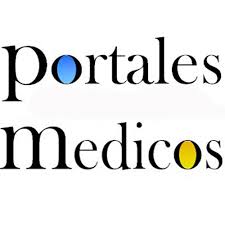 |  |  |
 |  |  | 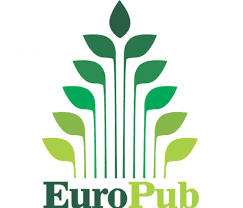 |
 |  | 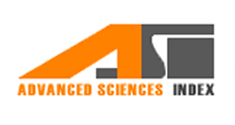 | 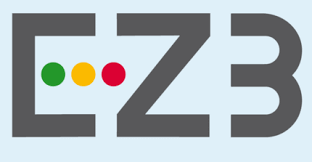 |
 |  |  | |
![]()
Todos los documentos publicados en esta revista se distribuyen bajo una
Licencia Creative Commons Atribución -No Comercial- Compartir Igual 4.0 Internacional.
Por lo que el envío, procesamiento y publicación de artículos en la revista es totalmente gratuito.

